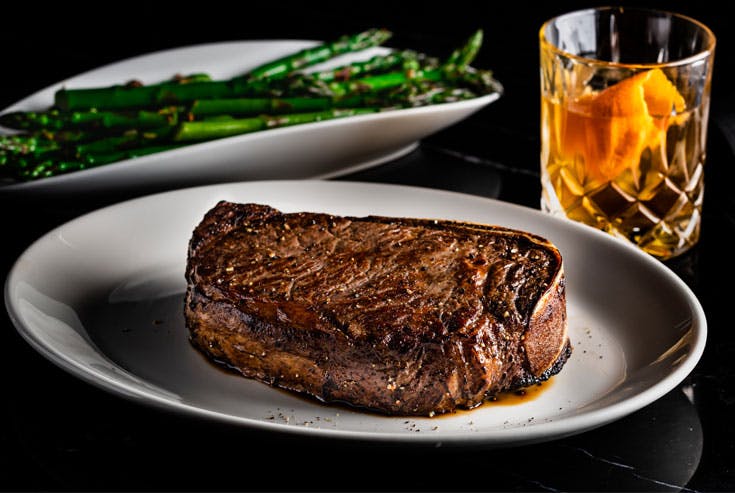Wet vs Dry – a Battle for The Ages

August 11, 2018
At Del Frisco’s, our steaks know a thing or two about aging gracefully. “Aging” in the beef industry is not specific to the numerical age of the cow, but the methods of creating tender meat. There are two ways to achieve the taste and texture of a melt-in-your-mouth steak craved by many: wet-aging and dry-aging.
WET-AGED
Process
Wet-aging refers to the process of vacuum-sealing the beef to retain its moisture. Brought on by advancements in plastics and refrigeration, wet-aging is still a relatively new technique. However, its popularity has grown dramatically due to ease of shipment and a shorter aging process consisting of no more than two weeks. Although the aging process is short, the enzymes are able to tenderize the meat with no risk of weight-loss or dehydration.
Flavor
Since the vacuum-sealed plastic doesn’t allow the meat to breathe, it ages in contact with its own juices, which creates a savory taste that many have come to love. Most meat purchase from a store is wet-aged unless otherwise specified.
DRY-AGED
Process
Dry-aging refers to the process of hanging beef or placing it on a rack to dry for several weeks. During this time, moisture evaporates from the muscle, creating and sealing in a higher concentration of flavor. This style of aging is often looked at as the purest form. However, it comes at great cost and time expenditures. The beef must be stored for long periods of time in freezing temperatures, which is why dry-aged beef is seldom offered outside of high-end steak houses.
Flavor
Dry-aged beef is commonly described as having a nutty, roasted flavor with a great deal of depth.
